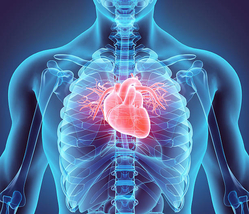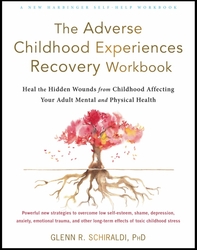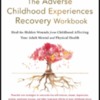Glenn R. Schiraldi, Ph.D. Psychology Today blog post, July 12, 2022
Recent articles have explained that adverse childhood experiences (ACEs) primarily imprint shame in the non-verbal, visual right brain (with its deep connections to the emotional and survival regions of the brain). This imprinted shame is experienced more as a disturbing emotion and felt sense, beneath conscious awareness, than as a conscious thought.
This right-brain imprinting occurs for two reasons: First, the verbal, reasoning left brain in insufficiently developed to process and store memories until around year three. Thereafter, the left brain is hardwired to go “off line” during overwhelming experiences when strong emotions and the survival instincts to fight, flee, or freeze override the less urgent need to talk and reason. If unresolved, shame resulting from ACEs exerts its disturbing influence well into adulthood.
This article briefly describes three additional strategies for rewiring shame. In a bottom up fashion, the two body-centered shame reduction strategies rewire the way people experience their bodies. Notice that these strategies weave accepting, appreciative, or compassionate feelings related to your body, while also introducing new cognitions about your body. (Once stress and emotional arousal are regulated, merging constructive thoughts with shame helps to neutralize the shame.) The third strategy, defusing, combines the principle of reconsolidation with an innovative approach to alter the shame memory.
Two caveats are repeated:
- The likelihood of success is greater after gaining reasonable mastery of the foundational skills previously described: strengthening the brain in preparation to heal, soothing imagery that strengthens and stabilizes the brain, regulating arousal that is stuck on too high or too low, and regulating intense emotions with skills such as mindfulness and self-compassion.
- If any of these strategies trigger intense discomfort—or if you think they might—stop. Seek the help of a skilled mental health professional specializing in trauma who can provide structure and support in the healing process.
Body-Centered Shame Reduction
In one sense the body is the container of shame. Although our bodies are externals and not our infinitely worthwhile core selves, how we experience our bodies often reflects—and influences—how we experience our core selves. Shame often plays out in the body, especially if the body has been shamed through abuse, bullying, or the like. If we experience the body with unpleasant feelings and negative judgments, this reinforces shame circuits in the brain. Conversely, appreciating the body helps to rewire shame circuits in constructive ways.
Here are two strategies that foster appreciation of our bodies.
Reflecting on a Shamed Body Part
From an adult perspective, you can now reflect upon a part of the body that was ridiculed or mistreated (Engle, 2006). Breathe compassion and acceptance into that body part. In writing, consider what you appreciate about that body part. How has that part served you? Imagine having a conversation with that shamed body part. What would it want you to know? What could it be trying to teach you? For example, “That I can choose to respect my body, no matter what others do or say”; “That I can accept my imperfections and rough edges while appreciating what is right with me,” Again breathe compassion and acceptance into that body part. Track your body and emotions. Has anything shifted in a pleasant way?
Loving the Body
A moment’s reflection on the jewels of the magnificently made body reminds us that our bodies are truly miraculous. For example, from the time of conception when a sperm and egg combine, cells multiply and specialize. Bones are produced that are ounce for ounce stronger than steel. The eleven-ounce heart tirelessly pumps thousands of gallons of blood each day, bringing oxygen and fuel to all the cells of the body. The hand will tirelessly extend and flex millions of times over a lifetime. The eyes and ears are marvels of miniaturization. The body defends against an army of invaders with an immune system that is unbelievably complex and coordinated.
Several times a day, look into the mirror and notice with appreciation what’s right, what’s working.
A powerful meditation ((Schiraldi, 2016) is to become aware of the various organs and regions of the body, reflect upon what they do, and then send warm light, love, and appreciation to each area of the body. Take your time doing this. This strategy especially becomes more effective with repetition.
Defusing
Steven Hayes (Hayes and Smith, 2005) has explained that much suffering is caused by the futile and endless attempts in our heads to fight against, fix, escape, or erase our histories. The defusing technique asks you to identify a single word that pulls you into the inner battle against shame. The word is fused with a painful memory and stirs up the shameful feelings.
The word might be shame, inadequate, stupid, loser, or something similar. Perhaps the word is embedded beneath conscious awareness in the painful memory. Using the principle of reconsolidation, you start by recalling the details of a shameful memory—feelings, bodily sensations, thoughts, and images—so that the brain has a chance to modify the memory. With a kind, non-judgmental acceptance and softened body, you then repeat the word loudly and quickly for 45 seconds. The word is an entry point to the memory, and expressing it helps to release its emotional charge.
Loudly expressing the word counters the secretive nature of shame and weakens the grip of the word. People often notice that the word just becomes a word, no longer fused with, or pulling up, those strong emotions. Both the memory and the word become less distressing. You realize you really can stand up to shame.
Now try this. Keep repeating the word, varying the way you say it to further alter the way you experience both the word and the memory. For example, repeatedly say the word in this order:
- slowly
- in a whisper
- in a high (falsetto) pitch
- in a low pitch
- with a scolding tone like nasty old Aunt Edna
- in a playful tone
- and finally in a kind tone.
Track your body and emotions. Generally, this strategy is tried with a moderately distressing memory several times a day over a period of several days. If successful, the defusing technique might be tried with a somewhat more distressing memory. Remember the caution to stop if this or any other skill becomes too distressing. This might signal the need to seek the aid of a trauma specialist.
My next article will explore three top-down strategies, adding to the principles and skills you’ve already learned to rewire distressing shame memories.
References
Schiraldi, G. R. (2021). The Adverse Childhood Experiences Recovery Workbook. Oakland, CA: New Harbinger. (Scripts for rewiring shame)
Schiraldi, G. R. (2016). The Self-Esteem Workbook, 2nd ed. Oakland, CA: New Harbinger Publications.
Engle, B. (2006). Healing Your Emotional Self. New York: Wiley.
Hayes, C. S., with Smith, S. (2005). Get Out of Your Mind and Into Your Life: The New Acceptance and Commitment Therapy. Oakland, CA: New Harbinger Publications.
About the Author
Glenn R. Schiraldi, PhD, has served on the stress management faculties at The Pentagon, the International Critical Incident Stress Foundation, and the University of Maryland, where he received the Outstanding Teacher Award in addition to other teaching/service awards. His fourteen books on stress-related topics have been translated into seventeen languages, and include The Adverse Childhood Experiences Recovery Workbook, The Self-Esteem Workbook. The Resilience Workbook, and The Post-Traumatic Stress Disorder Sourcebook. The founder of Resilience Training International (www.ResilienceFirst.com), he has trained laypersons, emergency responders, and clinicians around the world on the diverse aspects of stress, trauma, and resilience.
- Ridofranz/istockphoto
- Azmani/istockphoto
- Rasi Bhadramani/istockphoto
- yodiyim/istockphoto









Comments (0)